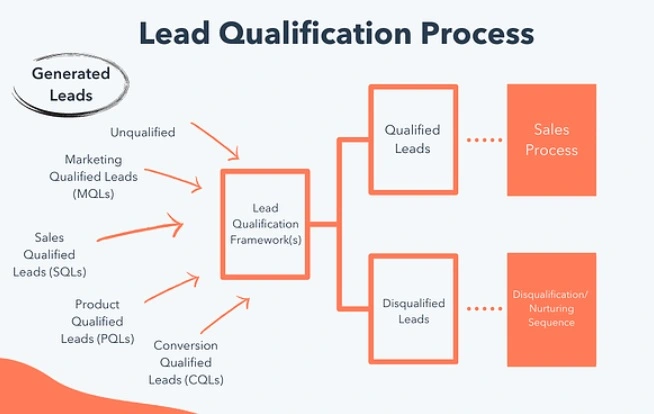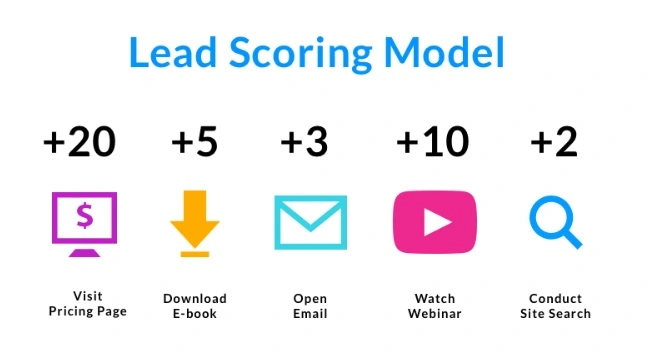The Complete Guide to Lead Qualification
Optimizing the journey from prospect to customer is crucial to maximizing your revenue. One of the best ways to smooth out and accelerate that journey is through lead qualification.
Without an effective lead qualification process, your sales and marketing teams could be wasting valuable resources on unqualified leads. According to Ruler Analytics, the average conversion rate of a lead becoming a qualified lead is 2.9%. With a better lead qualification process, you can help improve your conversion rates.
In this guide, we’ll explore what lead qualification is, why it’s important, and how to qualify your leads.
Key Takeaways
- Lead qualification helps you decide how close a prospect is to becoming your customer.
- Lead qualification has numerous benefits, including focusing your efforts on leads that are more likely to buy.
- Lead scoring is an important part of the lead qualification process.
What Is Lead Qualification?
Lead qualification is the process of categorizing your potential customers based on their ability and willingness to buy from you. There are multiple types of leads. Two of the most common are:
- Marketing Qualified Leads (MQL): A marketing qualified lead is a prospect the marketing team has identified as having a higher chance of becoming a customer than other leads.
- Sales Qualified Leads (SQL): A sales qualified lead is a potential customer who has expressed interest in your company and is ready to move into the sales process.
Typically, the marketing department handles MQLs and passes them on to the sales team to become SQLs. All types of leads should go through the lead qualification process to determine how likely that prospect is to become your customer. Only the most qualified leads move on through the sales funnel.

Why Is Lead Qualification Important?
In the simplest terms, lead qualification is important because it greatly improves your odds of closing a sale. Without it, you’ll likely waste your time and money pursuing leads that aren’t a good match for your brand.
While it might feel counterintuitive to not follow all leads, with the qualification process, you can narrow the field and improve your sales outcomes.
Lead qualification is important because:
- You typically know ahead of time what products and services the lead is interested in.
- You can feel confident moving on from unqualified leads.
- You can focus your efforts on fewer leads, offering a more personalized experience.
- More of your sales efforts will have positive outcomes.
- It streamlines your sales pipeline.
How to Qualify Leads in 5 Steps
Here are five basic steps you can take to qualify your leads.
1. Create an Ideal Customer Profile
For each product and service you offer, you likely created those things with your customers in mind. Who is that customer and what do they “look” like?
Answering this and other questions can help you create your ideal customer profile (ICP). Your ICP is a fictional customer based on real information.
Your ICP defines what type of customer is the best fit for your products and services. If you’re a B2B business, this might include things like:
- Business revenue
- Company size
- Industry
- Location
- Budget
- Size of their customer base
- What technology they use
- How mature their organization is
With your ICP in mind, this will help guide many of your decisions in the lead qualification process.
2. Use Lead Scoring
Lead scoring is a system where you assign “points” to each lead based on their behaviors and customer profile information. For example, a lead might earn points for visiting a product page, opening a marketing email, or reading articles in your blog.

You can then use the scores to prioritize the highest-scoring leads who are showing the most interest in your company and products. If a lead has a lower score, they might still be in the brand awareness stage, while a lead with a higher score is much closer to the decision stage.
How many points each behavior earns and what the total score means is up to you and what your business priorities are. While the specific criteria will vary from one business to the next, using lead scoring can help you find better-qualified leads that will convert into customers.
3. Research Your Leads
With a well-defined ICP and a solid lead scoring model, you can start researching your leads. Once a lead reaches whatever scoring threshold you’ve established, you can focus more of your time on learning about them.
As a B2B business, you need to know certain things about your potential customers. You should look for matches between the lead and your ICP.
Consider things like:
- Company information: Look for general information like where the business is headquartered, how many employees it has, and what its mission statement is.
- Company funding: If a company’s funding information is accessible, look for signs of an influx of cash, which can be a good indicator that it will make a purchase.
- Positive growth: Has the lead recently hired new leadership, launched new products, or added new jobs?
- Negative growth: Are there signs the lead isn’t doing well? Have there been recent layoffs or a lack of funding?
If a lead comes out of this stage with a strong lead score and is a good match for your ICP, you should move on to the next stage.
4. Reach Out to Learn More
While some information is easily accessible online, some details might need more investigation. When this happens, it’s time to reach out and connect with your lead.
This is when you ask qualifying questions:
- What problems are you trying to solve with our products/services?
- How did you learn about our brand/products?
- Have you tried other solutions in the past?
- When do you want to implement this solution?
- What happens if you do nothing?
- Who makes the final purchase decisions?
- What’s your budget to solve this problem?
5. Qualify Your Leads
With all the information you gathered in the previous steps, you should be able to categorize your leads as either “qualified” or “unqualified.”
Keep in mind, if you put a lead in the “unqualified” category, that doesn’t mean they won’t become a customer. Sometimes leads need more time or different circumstances before they are ready to commit. They might get an influx of funding or new leadership with different priorities.
This video offers even more insights into lead qualification and how you can use it to benefit your sales team.
Improve Your Lead Qualification with Televerde
Lead qualification is essential to improving your customer conversion rates. However, it can be a time-consuming task. If your sales team is struggling with your lead qualification process, Televerde is here to help.
We offer a wide range of business solutions for every stage of the customer journey, including sales qualification.
Interested in learning more? Contact us today to talk about your goals.


